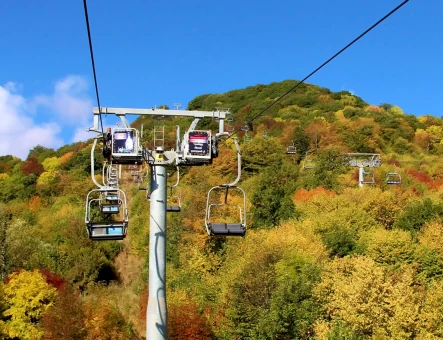Private tour: Uncover northern beauties of Armenia in 3 days
Tsaghkadzor, Kecharis Monastery, Lake Sevan, Sevanavank Monastery, Goshavank Monastery, Haghartsin Monastery, Dilijan
1. Tsaghkadzor
5-10 min





















2. Kecharis Monastery
20-30 min

















3. Lake Sevan
























4. Sevanavank Monastery
50-60 min























5. Goshavank Monastery
40-50 min















6. Haghartsin Monastery
60-70 min























7. Dilijan
20-30 min


























Akhtala Fortress, Haghpat Monastery, Sanahin Monastery, Kobayr Monastery
1. Akhtala Fortress
40-50 min






















2. Haghpat Monastery
50-60 min





























3. Sanahin Monastery
40-50 min



















4. Kobayr Monastery
50-60 min












Gyumri, Harichavank Monastery, Dashtadem Fortress, Aruch Cathedral, Yerevan
1. Gyumri
90-110 min






































2. Harichavank Monastery
20-30 min














3. Dashtadem Fortress
20-30 min





















4. Aruch Cathedral
20-30 min






















Inclusions
-
Professional drivers
-
Air-conditioned vehicles
-
Bottled water
-
Free pick-up & drop-off within Yerevan
-
Vehicle & passengers insurance
-
Extra stops on the route upon request
-
Driver/Guide accommodation & meals
Exclusions
-
Hotel accommodation
-
Significant deviations from the route
-
Alcoholic beverages if lunch option selected
-
Audio guides
-
Wi-Fi in the vehicles
What to expect
- Discover the beauty of the Armenian valleys
- Visit one of the largest freshwater high-altitude lakes in Eurasia
- Admire the forests of the "Armenian Switzerland"
- Marvel at the incredible UNESCO World Cultural Heritage sites
- Explore the picturesque mountain ranges
- Walk along "the city of crafts and arts"
*200 steps to climb to Sevanavank
*600 m to walk up to the hill to Haghartsint
*This tour is NOT recommended for people with high blood pressure
Booking conditions
Cancellation & modification
Meet our Guides

Davit Hasratyan
I'm Davit, a history teacher, amateur actor, and since 2010, a guide at "Hyur Service"! I love my country and strive to make every tour I conduct leave an unforgettable impression on our guests, making them want to come back again and again!

Karen Khachatryan
Dear friends, my name is Karen, and I am your guide through the amazing Armenia. My many years of experience allow me to conduct fascinating tours to the most popular and interesting places in the country. I bring history to life, sing psalms in ancient churches, and tell captivating legends, making your journey unforgettable. With me, you can expect a safe, informative, and vibrant trip!

Khachatur Mirzoyan
My name is Khachatur, which is the Armenian variation of Chris (Christopher), and I'm comfortable with that as well. I have been working as a tour guide since 2012. I'm a sociable person, love interacting with people, and always do my best to make sure the tour lives up to our guests' expectations.

Marina Mirumyan
Hi, my name is Marina Mirumyan, and I am a tour guide at "Hyur Service" company. Haven't traveled to Armenia yet? Then plan a visit and be our guest! Join my tours with "Hyur Service" to discover the endless hospitality of our people, the breathtaking views of our mountainous country, the ancient culture, traditions, delicious cuisine, and much more! Travel with "Hyur Service" to create lasting memories!



